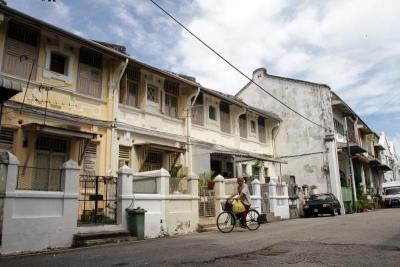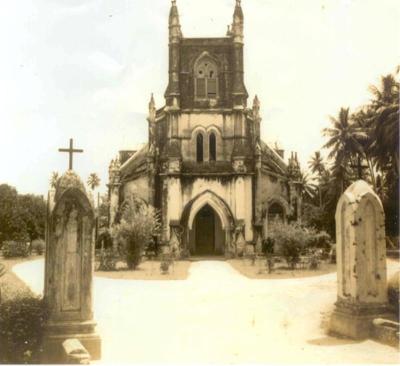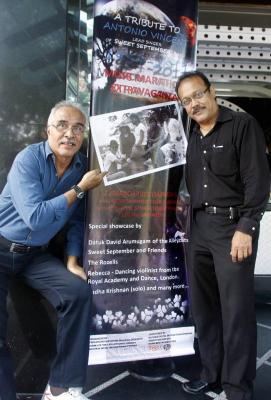 Peaceful enclave: Pre-war houses in Argus Lane have not diminished in historical value as early Eurasians made the area their own.
Peaceful enclave: Pre-war houses in Argus Lane have not diminished in historical value as early Eurasians made the area their own. STUDYING in St Xavier’s Institution (SXI) in Penang, it is almost impossible not to have a classmate, or at least a schoolmate, from the Eurasian community.
In any case, there were many Eurasian teachers in the Catholic school. The Eurasians were referred to as the Seranis colloquially.
There were plenty of students and teachers with surnames such as Rozells, Boyle, Robless, Nonis, Cornelius, James, Capel, Barbosa, Danker, Foley, Jeremiah, Green, Reutens, Coombs, Andrew, Aeria, Beltram, Moreira, Gomes, Rozario, Mcintyre, Scully, Cardoza and Byrne.
Across the road, there was the Convent Light Street (CLS), which also had a strong Eurasian population, as did Convent Pulau Tikus (CPT) located further away.
As a teenager, I spent a lot of time at Solok Serani or Eurasian Close, which is a minor street off Kelawei Road in Pulau Tikus.
Having many Eurasian friends, it was only natural that I would meet up with my schoolmates there.
Needless to say, that included meeting up with friends from the opposite sex, namely the girls from CPT, whenever we had Boy Scouts-Girl Guides joint activities!
But there was also a more serious side — I had personal tuition in Mathematics from a classmate, Tony Mariadass, who stayed in Kampung Serani, behind the Church of the Immaculate Conception in the area.
I was completely hopeless in maths, excelling better in languages and arts-related subjects, and the late Tony guided me in that tricky subject.
In my time, we had to sit for the Lower Certificate of Education, now known as the Penilaian Menengah Rendah, and failing maths meant getting kicked out of school.
There was no such thing as continuing one’s study until Form Five if one failed the compulsory Bahasa Malaysia or Maths papers in Form Three.
Maths was also an important subject in the Malaysian Certificate of Education exam or the Sijil Pelajaran Malaysia.
So, I had to depend a lot on Tony to teach me in the afternoons before I sought divine intervention inside the church sanctuary.
Today, the Penang Eurasian Association building stands proudly at the end of the road.
 Heritage: The Church of Immaculate Conception was the focal point of the Eurasian Catholic community in Pulau Tikus. Although the building’s facade have been upgraded, the church still stands.
Heritage: The Church of Immaculate Conception was the focal point of the Eurasian Catholic community in Pulau Tikus. Although the building’s facade have been upgraded, the church still stands. The first group of Eurasians arrived in Penang from Phuket with founder Captain Francis Light in 1786. The group included his Eurasian wife, Martina Rozells.
These Eurasian settlers had escaped from the Burmese who had targeted the Catholics in their attacks in Phuket.
Settling down in George Town around China Street and Bishop Street, they built a wooden church called the Assumption Church.
According to researcher Eustace Nonis, it was in 1810 that the pioneer group of Portugese Eurasians relocated from Phuket to Penang, where they chose Pulau Tikus to build their settlement.
The focal point, he wrote, was the Church of the Immaculate Conception, which they built.
A school commonly known as the “Noah’s Ark” was built to serve the community with the entire area eventually known as Kampung Serani.
Because of their fluency in English, in later life, many were recruited into the civil service including the then City Council of Penang. Many also became teachers.
The community also played a major role in the development of two premier schools — SXI and CLS — as well as the Church of the Assumption in Farquhar Street.
SXI teacher Jimmy Boyle created history when he composed Putera Puteri and Kemegahan Negara Ku — which were played at midnight in 1963 when Malaysia was born. As a true Xaverian, he returned to teach in his alma mater after graduating from the Raffles College in Singapore.
Another SXI teacher from the community was the late Colin Rozells.
Born and bred in Penang, Rozells taught Math and English at SXI and was best remembered as a discipline master.
Rozells was also remembered by those in the Red Cross and Red Crescent societies, an organisation he was most passionate about.
After he retired from teaching, he worked at the Malaysian Red Crescent Society headquarters in Kuala Lumpur.
 Sweet sounds : (From left) Sweet September band members Dean Yusoff and Ignatius James in musical tribute for the late lead singer Antonio Vincent held recently.
Sweet sounds : (From left) Sweet September band members Dean Yusoff and Ignatius James in musical tribute for the late lead singer Antonio Vincent held recently. The school also produced a famous 1980s local band, The Sweet September, which included founding members who were mostly Eurasians.
The late Michel Barbosa taught at SXI and went on to coach the national badminton team.
In The Star newspaper, my predecessor, Michael Aeria, was also from SXI and dedicated his life to being a newspaperman.
A colleague, Ronald Bryne, who wrote a similar column on the street names of Penang in the 1980s, is today based at our headquarters in Petaling Jaya.
Then, there is another long-time colleague, Ian McIntyre, in Penang.
Some of the early Eurasian settlers chose to make Argus Lane their home, which is near the Cathedral of the Assumption.
Interestingly, the island’s first independent newspaper, the Pinang Argus, was published from 1867 to 1873 while the country’s first newspaper Prince of Wales Island Gazette was published in Penang in 1805.
According to Boon Raymond, who writes extensively on Penang history, there were 27 English newspapers published in Penang between 1806 and the 1970s.
The Star, of course, was also founded in Penang by KS Choong with its first office at Weld Quay, before moving to its current office in Pitt Street or Jalan Mesjid Keling.
From education to professional jobs, certainly Penang has a rich history, much of which was contributed by the Eurasian community.





